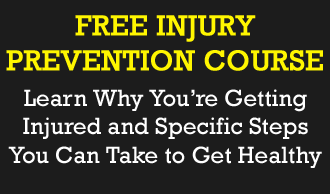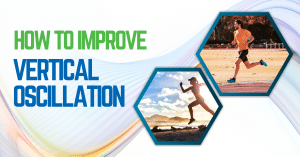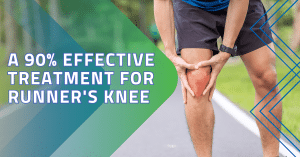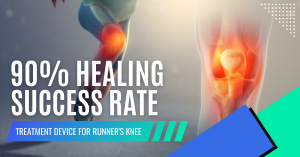Recent research has shown that as many as 79% of runners get injured at least once during the year.
Stop. Think about that number for a moment.
Nearly 8 out of every 10 runners you see at your next race have been or will be injured sometime that year.
Recently, a lot of the attention in regards to running injuries has been focused on the bio-mechanical aspects; specifically, footwear and the minimalist movement. And while I believe 100% that finding the optimal foot strike and running gait for each individual person is critical, it’s not the first place runners should start looking when it comes to the predominance of running injuries.
In my coaching experience, there’s often a much easier solution to the running injury problem – training. And that’s what we’ll cover in this article.
The two primary reasons runners get hurt
I believe that runners primarily get injured for two reasons:
- Structural imbalances, such as having one leg shorter than another, bio-mechanical issues, or experiencing a severe weakness in a certain muscle group.
- Progressing their training volume and running speeds at a pace that their body is not ready to handle. Or, as coach Jay Johnson would technically define it, “metabolic fitness precedes structural readiness”.
As a running coach, I deal in both of these injury realities and have confronted both in my own running career. As I mentioned before, there is no doubt bio-mechanical and structural deficiencies are an important part of the equation. However, this post will focus on the importance of proper training progression since structural imbalances are something that need to be addressed outside the training cycle, is a slow process, and often requires the help of a good physical therapist, podiatrist, or chiropractor.
Structural vs. metabolic changes
Don’t be intimidated by the “science” sounding title of this article. Structural versus metabolic changes simply means that a runner’s aerobic and anaerobic fitness develops at a faster rate than their tendons, ligaments, muscles, and bones. For example, you may be able to head out the door and hammer out a long run or a tempo run at 8 minutes per mile (or whatever your tempo pace is), but your hips might not be strong enough yet to handle the stress of the pace or the length of the run and, as a result, your IT band becomes inflamed.
This experience is very common for runners who get recurring shin splints when they first start running. Their aerobic fitness is allowing them to continue to increase the distance of their runs because they no longer feel “winded” at the end of each run; however their shin muscles haven’t adapted to the increased pounding caused by the increase in distance and they quickly become injured.
In my opinion, a runner has two ways to combat these types of injuries: (1) continually address the structural system during training; and (2) progress the volume and speed work at a level the body is capable of adapting to.
Addressing the structural system
To address the structural system, I think runners should start with a running-specific strength routine that includes lots of core work so they can identify any weak areas. Research has also shown that hip strength , or lack thereof, strongly correlates with running knee injuries. Therefore, a hip strengthening program may also be beneficial.
By strengthening the core and running specific muscles, you can “speed up” the progress of the structural system and begin adding in longer and faster workouts earlier in the training cycle.
Furthermore, for beginner runners, or those who are unable to run the volume they desire, you can perform running specific strength exercises that improve your strength and flexibility while still providing an aerobic component. To accomplish this, I often have runners perform what I call the “machine” workout.
While addressing the structural aspect is important, I think the most critical component to staying injury-free is ensuring that your training plan follows a patient and planned progression while gradually introducing running at your desired goal race distance and race pace.
Jumping into speed work too quickly
When I analyze generic schedules, I often see a quick progression from easy running to full-blown speed workouts. I think the transition from mainly easy aerobic runs to any form of speed work needs to be buffered with introductory speed dynamics, such as strides, hill sprints, steady runs, and short fartleks. This concept is especially true for beginner runners.
Furthermore, most long-time runners have heard of the training concept known as the “base building” period. Base building refers to a portion of the training cycle where the runner focuses on increasing mileage and forgoes harder workouts. However, I believe the traditional base building cycle may actually contribute to most running injuries.
While slowly increasing training volume is a good thing, most runners exit the base building cycle and introduce speed work too quickly. While they’ve upped their mileage and training volumes and feel confident in their new strength and endurance, they’ve gone numerous weeks, or even months, without doing any type of speed work and expect to jump back into race pace without any consequence. When you neglect doing faster pace work for an extended length of time, you lose the muscular readiness to run fast without increasing injury risk.
To combat this, runners need to include strides, hill sprints and even short fartleks into their training at all times. This doesn’t mean runners have to be laser focused year-round, but simply adding in a few strides and hill sprints a few times per week will go a long way towards warding off injuries.
In addition, as has been much discussed in previous articles, you have to make sure that you take your easy runs slow and give your body a chance to recover from the stress you’re inducing.
Race specific running
Finally, as I’ve discussed previously on this blog, you need to train to the specific demands of the race. So, if you want to run 10k in 40 minutes, you need to train your body to do two things: (1) handle 6:25 per mile pace without breaking down; and (2) handle 6:25 mile pace for 6.2 miles without breaking down.
So, in-line with what I’ve been discussing, you first need to get your body adjusted to running 6:25 per mile. For example, your first workout might look like: 12 x 400 @ 1:35 w/90 sec rest. Later in the training segment, as your body adjusts to the workload, your workout might become: 8 x 800 @ 3:12 w/90 sec rest. Now, you’re doing 5 miles of volume at race pace instead of 3, but because you’ve slowly introduced work at race pace to your body, your structure is able to handle the stress. You final workout 10 days before the race might look like: 10 x 1000 @ 4:00 w/60 sec rest, hammer # 5 and 8.
By being patient and gradually introducing both race pace work and specific volume at race pace, you can hit all your time goals while staying injury free.
I am interested to hear if you like the more “theoretical” nature of this post or if you prefer the specific “how to” articles better. As always, I enjoy comments and feedback, so please don’t hesitate to comment below or share via facebook and twitter.
*I want to acknowledge that a lot of my thoughts on this subject were inspired from Jay Johnson, who also wrote a piece on this topic in his blog and Mike Smith, the head Cross Country Coach at Kansas State University.








24 Responses
Thanks, interesting. However, surprised to see suggestion of a chiropractor. Evidence for chiropractors is extremely weak, and there is evidence for harm.
Thanks for the comment and I am glad you liked the article. I actually believe that chiropractic work can be beneficial for runners. However, just like any other medical practitioner, it’s important that you find someone you trust and who works with athletes. You can find bad practitioners in all fields of medicine and therapy, but I do believe that structural manipulation can help alleviate imbalances.
Love this answer! How true it is. I also would recommend a medical or sports massage therapist. These massage therapist can help with leg length discrepancies as well, plus they can aid in loosening tight muscles in all phases of training or after competitions. Chiropractic work pairs well and the results are often times enhanced by the work of massage therapists.
I can vouch for the benefits of sport specific chiropractic care by a well trained practitioner. Mine specializes in ART and has worked wonders on both keeping me on my feet and identifying weaknesses that need to be addressed.
Timely article for me as I am still recovering from a sfx (5th met) I suffered in February. I focused on building my base back and hit the track for a speed session for the first time this week. What did I do? A few strides. And I had already planned on adding hill sprints next. Thanks Jeff.
Glad you’re coming back the right and smart way, James. Fingers crossed the build-up continues to go well.
Hi,
First of all, thanks so much for your articles, they have greatly helped me understand a lot of things about running and are part of my daily reads.
Answering your request, I very much like the format of this particular post: theory with a practical example that illustrates the point. On the more practical posts I have a bit of a hard time following the format, perhaps a table to organize the data would help.
Thanks again!
Thanks for the feedback. I’ll definitely work on formatting the data better for the practical posts. Do you have an example of a post you had a particularly hard time with? Send me the URL if you remember it and it will give me a better idea of how to make these articles even better. Thanks again!
Too many runners look to blame the shoes or some other factor before considering the “chassis versus engine” readiness – i.e., overtraining. I have been injured both of the last two years and as much as a PT would want to tell me it’s related to this imbalance or that inflexibility, there is little doubt that it’s more related to trying to do too much too soon. And in both cases, the keys to getting back to training successfully (and I’m sure it will be the key to continuing to do so) were finding a good chiropractor to help work out scar tissue adhesions, and investing in the general core and hip strengthening routines that you mentioned.
As far as your question, I think the best running blogs are able to shift back and forth between the “theoretical” and “practical” articles. The value of “how to” articles can be limited if one doesn’t take the time to understand the underlying principals behind them. Jay does this with his blog and podcast, you and the rest of the Competitor.com team do it as well (and maybe I’m biased, as I strive to do the same on my blog).
Thanks for your insight and sharing your experience Greg. You’re right, most practitioners always have a narrow view of injuries and often want to be the “solution” without really looking at the athlete’s training to see if there is a flaw there as well.
You definitely strike a good balance on your blog, which makes it refreshing to read. I enjoy your practical approach and the fact that you don’t claim to have all the answers (no one does in my opinion).
Good luck with the training!
The article is great. I have always wondered why you add those strides to the end of my workout. And, even though i don’t like it, i understand my new schedule a little bit better.
Glad you enjoyed Laurette and it helped you understand the strides weren’t just for show 🙂 Check out the interview I am posting with Coach Nate in two weeks. He talks about strides and how he didn’t want to do them and now regrets it specifically in the final 10-15 minutes.
I really enjoyed this article. I am a runner in my mid-40’s and injury prevention is on my mind more and more. It seems like the older I get, the more “on the edge” of injury I am. I am beginning a new training cycle for my eighth marathon and am always looking for ways to train smarter. I enjoy a nice mix between theory and “how to.” I am an RRCA trained running coach and sometimes the theory speaks more to me than the “how to” posts.
I would like to repost this article on a little group running blog that I am part of. Come check us out. I’ll let you know when I post. http://theruniverse.com/
Hi Lisa, I am glad you enjoyed the article and get a lot of value out of it. Please feel free to repost the article in your group with a link back to the original. You guys have a great site and I look forward to following.
Hi!
Thank you very much for this great article! If I had only read this earlier I probably wouldn’t be suffering from all the typical running injuries right now and would not have to cancel my participation at Berlin Marathon. But, anyway, I have learned the lessons, will rest now and start over again for next season.
I an looking forward to your next posts!
Cheers from Germany
Alexa
I really appreciate the “theoretical”. It seems to me to be pointless to discuss doing something, without discussing why we are doing it. I think people are better motivated to stick to what you suggest if they know why.
Thanks for what you do.
I think there’s a third reason that runners get hurt, which is staying in peak form too long. Even if you’ve worked up to being in great shape slowly, and your body has been able to handle the load as you increase, that doesn’t mean you can continue to train at that level indefinitely. Time off is key, and if you don’t take it intentionally, you’ll get it while recovering from injury (he says after 14 months of a plantar fasciitis-caused layoff).
Thanks for the great articles I will be looking forward to moving on after my injury. I have a severe stress fracture. I have only been running for about a year and increased my mileage too early.
I am really looking forward to slowly getting back into running. I went to the doctor they told me I had a shin splint and rest. After going back multiply times they finally figured out it was a fracture.
I am very new to your web site, blogs etc. I’ve been a runner for many years (or a glorified jogger! lol), regardless, I believe I have suffered from pelvic imbalances for many years. Finally, I took off this past year (starting last April) completely from any type of exercise to concentrate on figuring out what was causing my hip, knee, foot pain. I had many x-rays and MRI’s which showed nothing abnormal, so I finally realized the problems might be muscular and so that’s where I started. It took a lot of books, sports PT’s, chiropractic work, and medical massage therapist to finally give me some relief and insight into these problem areas. I have extreme weaknesses in my pelvic muscles, thereby allowing the pelvis to twist to one side. This occurred while sitting, standing walking and running. This twist puts an enormous amount of stress on the body’s fascia, hip and knee joints as well as changes your foot strike patterns. I hope to start back in the gym this March (2014). I am thankful for your articles, the explanations and the how-to info you give. Hopefully in the next year or two I’m going to get to my goal- to run at least 1 marathon.
I like that you’ve added in some theoretical comments. I’m new to long distance running and I’ve found that your theory rings true to my experience. I believe my heart and lungs are way ahead of the rest of my body. However, in my limited reading, I haven’t seen anyone come right out and and say that is possible. Simply following my marathon training schedule may not be enough.
Thx for all
I’ve been a runner for almost 40 years and I’ve also noticed that premature speedwork has been one of the biggest reasons for runner injuries-including myself. Your articles are some of the most informative I’ve read; keep them coming, the running community needs them!
I’m new at running and for the past 8 weeks have been training for a 5km run with the program C25K and on my last run of 5km sprained my ankle – even though i was being careful (i’m 58 years old). it has been over 2 weeks and i’m trying to get back into running even though my ankle still hurts. i’m taking it slowly (doing only 1 km at a time and then walking) and hope that i’ll be able to do the 5km race this coming weekend. i read your article and i hope i’m not over doing it. i guess i should be listening to my body and not to my head that keeps saying “you have to do this race”. thank you for the article.
Thank you for enlightening me that my structure can be a cause of my running issue. What is the best running shoe for someone with one foot bigger than the other?